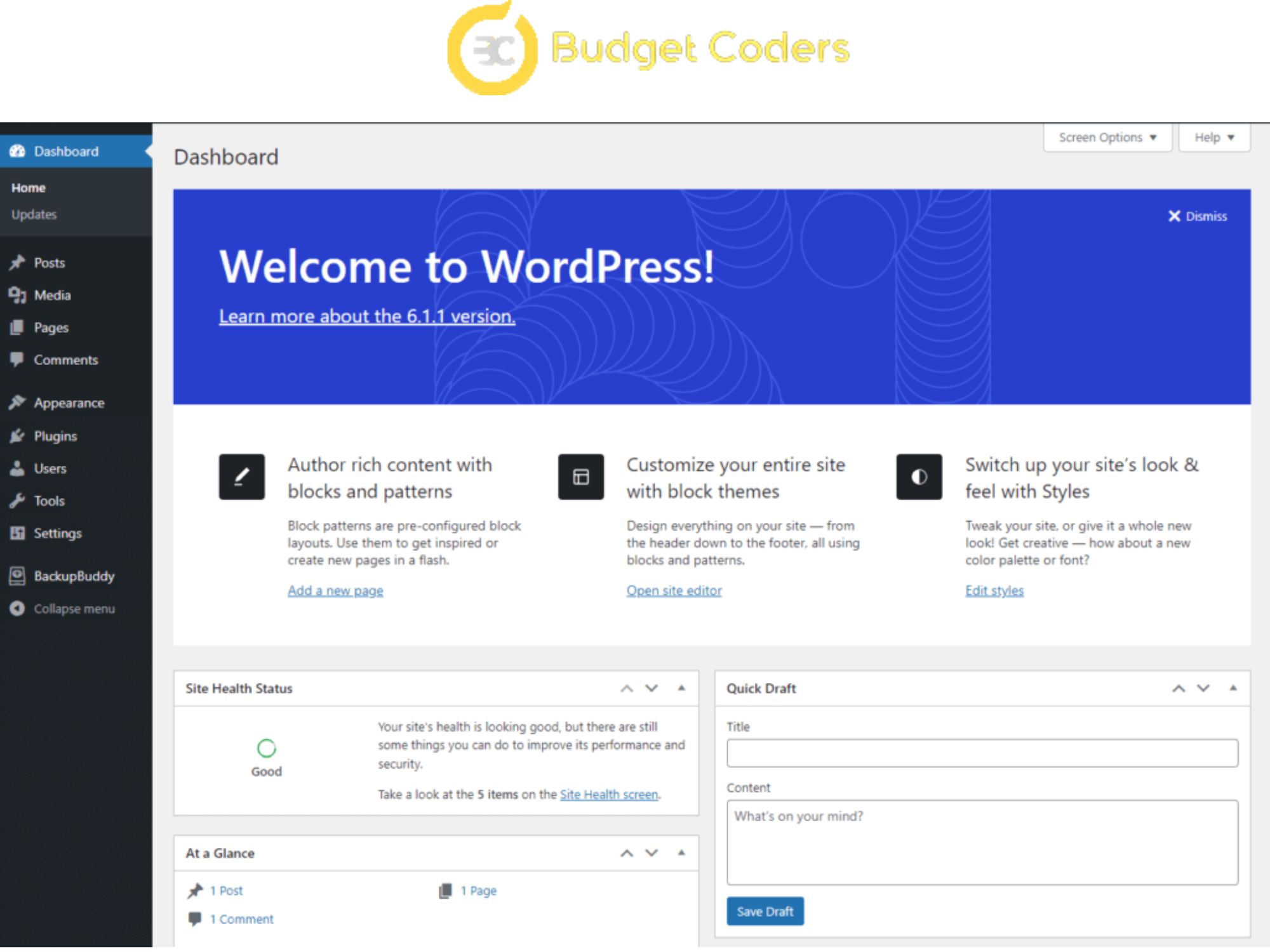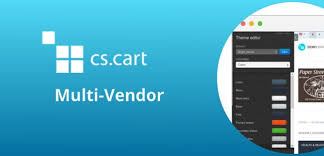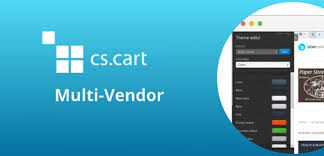Are you looking to start your own blog or website but don’t know where to begin? WordPress is one of the most popular and user-friendly content management systems out there, and in this article we’ll be taking a look at the basics of what it is and how you can use it to get your project up and running.
What is WordPress?
Assuming you’re starting from scratch, WordPress is a content management system (CMS) that helps you create a website or blog. WordPress is free and open source software released under the GPL.
When you hear “WordPress”, you may think of the world’s most popular website builder and blogging platform. While that is one use of WordPress, it is not the only way to use this CMS. In fact, WordPress powers over 35% of all websites on the internet.
How does WordPress work? At its core, WordPress is just a set of PHP files that run on a web server. When you type in a WordPress website address into your browser (like www.example.com/wordpress), those PHP files are retrieved from the web server and ran. The server then generates HTML code which is sent back to your browser and displayed as a web page.
Now, if all of that sounds complicated, don’t worry! You don’t need to know how to code in order to use WordPress. In fact, with WordPress, you can create a website or blog without ever touching a single line of code. That’s one of the reasons why WordPress is so popular – it’s user-friendly and anyone can learn how to use it.
Benefits of Using WordPress
When it comes to content management systems (CMS), WordPress is one of the most popular options available. And for good reason – WordPress is a flexible, user-friendly CMS that can be used for everything from simple websites to complex eCommerce platforms. Best of all, WordPress is free and open source.
There are many benefits of using WordPress, including:
* Ease of use: One of the main reasons why WordPress is so popular is because it is relatively easy to use, even for those with no prior experience in web development or design. Setting up a basic WordPress website can be done in just a few clicks, and there are plenty of resources available online to help you get started.
* Flexibility: Another great thing about WordPress is its flexibility. There are literally thousands of themes and plugins available for WordPress, which allows you to customise your website to suit your specific needs and preferences. With so much flexibility, you can really make your WordPress website your own.
* Cost-effective: As we mentioned earlier, WordPress is free and open source software. This means that you don’t have to pay anything to use it, which can save you a lot of money – especially if you’re just starting out with your first website. In addition, there are many free themes and plugins available for WordPress, so you don’t have to spend a lot of money on website design or functionality either.
How to Set Up a WordPress Website
If you’re new to WordPress, the thought of creating a website can be daunting. But with a little guidance, it’s not as difficult as it seems. In this article, we’ll walk you through the basics of setting up a WordPress website.
To get started, you’ll need to purchase a domain name and hosting plan. Once you have those, you can install WordPress and choose a theme for your site. Then, it’s just a matter of adding content and customising your site to make it your own.
Sound like a lot? Don’t worry – we’ll go over each step in detail so that you can have your WordPress website up and running in no time.
The Different Elements of a WordPress Site
WordPress is a content management system (CMS) that enables you to create a website or blog from scratch, or to improve an existing website. It’s free and open source software released under the GPL.
WordPress is used by millions of people around the world, including many large organizations, such as The Guardian, Forbes, and The New York Times.
At its core, WordPress is made up of three parts:
* The WordPress CMS software itself. This is what you download and install on your own web server, or get from a web hosting company.
* Your WordPress database. This is where all your website’s content (posts, pages, comments, etc.) is stored.
* The WordPress themes and plugins you choose to add to your site. These can be found in the official WordPress plugin and theme directories (or elsewhere).
The Different Elements of a WordPress Site:
1) Themes: A theme changes the look of your website, often including its layout. Changing your theme changes how your site looks on the front-end, i.e. what a visitor sees when they browse to your site on the web.
There are two types of themes: free and premium (paid). Free themes are available through the official WordPressTheme Directory while premium themes can be purchased from marketplaces and individual developers..
2) Plugins: Plugins are pieces of software that add new features to
Basic Concepts for Creating Content in WordPress
WordPress is a content management system (CMS) that enables you to create a website or blog from scratch, or to improve an existing website. In order to use WordPress, you will need a domain name and web hosting.
Once you have set up your domain name and web hosting, you can install WordPress onto your site. Installing WordPress is usually a very easy process, and most hosting providers will offer a one-click installation of WordPress.
Once WordPress is installed on your site, you can begin creating content for your website or blog. To do this, simply log in to your WordPress site and navigate to the “Posts” section. From here, you can add new posts by clicking on the “Add New” button.
When creating a new post, you will be presented with a blank text editor. This is where you can write the actual content for your post. You can also add images, videos, and other media to your posts by clicking on the “Add Media” button.
Once you are finished writing your post, simply click on the “Publish” button to make it live on your  .
.
Customizing the Appearance of Your WordPress Website
One of the great things about WordPress is that it is highly customizable. You can change the appearance of your WordPress website to match your brand or style.
There are two ways to customize the appearance of your WordPress website: through the theme customizer and through code.
The theme customizer is a tool that allows you to preview and change various aspects of your theme, such as the colors, fonts, and layout. To access the theme customizer, go to Appearance > Customize in your WordPress dashboard.
If you want to make more drastic changes to your website’s appearance, you can do so by editing your theme’s code. This is a more advanced technique and should only be attempted if you are comfortable working with code. Always backup your files before making any changes!
Tips for Enhancing Performance and Security
When it comes to WordPress, there are a few things you can do to enhance both performance and security. Here are a few tips:
1. Use a good web host. This will help ensure that your website is always up and running quickly.
2. Use a caching plugin. This will help speed up your website by caching static files.
3. Use a security plugin. This will help to keep your website safe from hackers and other malicious users.
4. Keep your WordPress installation up to date. This will help you avoid any potential security vulnerabilities that may be present in older versions of WordPress.
5. Don’t use nulled or pirated themes or plugins. These can introduce security vulnerabilities into your website. Always buy or download themes and plugins from reputable sources only.
Concluding Remarks on How to Use WordPress
In conclusion, WordPress is a great way to create a website or blog. It is easy to use and has a lot of features that make it a great platform for beginners and experienced users alike.
FAQs
Q. What is WordPress?
WordPress is an open-source content management system (CMS) used to create websites, blogs, and applications. It makes it easy for developers to design and manage a website without having to code from scratch. With WordPress, you can customize the look and feel of your website with themes and plugins, plus easily manage content like posts, pages, menus, and more.
Q. Is WordPress free?
Yes, WordPress is completely free and open source. It can be downloaded at no cost and used for websites of any size or complexity. With WordPress, you get access to thousands of customizable themes and plugins that make it easy to create the perfect website without spending a penny.
Q. Do I need to know how to code to use WordPress?
No, WordPress is easy to use even if you don’t know how to code. With the vast number of themes and plugins available, you can make a professional website without any coding knowledge. However, if you have some coding experience it will help unlock more advanced features and customizations.
Q. How do I change the style of my WordPress website?
With WordPress, you can easily change the style of your website. You can do this by editing the CSS in the theme or plugin you are using, or by installing and activating a new theme that matches your design needs. Additionally, if you want to completely customize your WordPress website, there are plenty of plugins available to help you make changes quickly and easily.
Q. How do I install a WordPress theme?
Installing a WordPress theme is easy and straightforward. First, log in to your WordPress dashboard and go to the Appearance section. From there, click on Themes > Add New, find the theme you want to use, and click Install. Once the installation finishes, activate your new theme and you’re done! You can then customize it to fit your needs.



